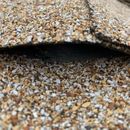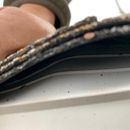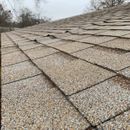New(er) roof shingles “buckling,” but unsure what’s causing it
Hello, All:
In September, I replaced a roof on a rental property that had abysmal sheathing. During the replacement, the crew replaced a substantial portion of sheathing – interlacing 7/16 OSB with the existing plywood sheathing, where necessary. The underlayment is synthetic felt and the OSB was not wet during installation. Until recently, these shingle “bumps/buckles” were not present so, it seems it took some time to manifest, whatever the issue. I inspected the entire roof and there was only one semi-vertical line that was buckling; starting at the gutter line and proceeding toward the ridge for about 5 lf.
Any ideas? Thanks in advance for all your time! (CZ5A)
-Mat
GBA Detail Library
A collection of one thousand construction details organized by climate and house part














Replies
Mat,
I can't see your photos, but when shingles start buckling in straight lines in winter, that's usually caused by the sheathing being installed too tight, with a side probability of moisture condensation making the sheathing swell. Roof sheathing is supposed to have at lesat a 1/8" gap between sheets to allow for some expansion in damp conditions. If you don't have that, it buckles when it swells, and that shows through the shingles. The edges soak up more moisture than the fields, and the swelling/buckling is often worse at the edges.
You mentioned that the sheathing was "abysmal." How so? Was it bad material, installed badly, or rotted? If rotted, was that caused by roof leaks or by condensation? Your swelling sheathing sounds like it may have been condensation. Take a look at the underside of the sheathing on a very cold morning (before it is warmed by the sun). If there is visible moisture or frost on it, you've got to deal with the moisture. Ventilation, air sealing, etc. is the solution.
Peter,
All great info; Thanks! The sheathing was replaced due to rot - the previous generation of shingles were incredibly deteriorated and were approaching 40 years old with a few, random shingles interspersed as emergency repairs.
I've replaced the original pictures so, hopefully, the new ones are visible. Thanks for knowledge.